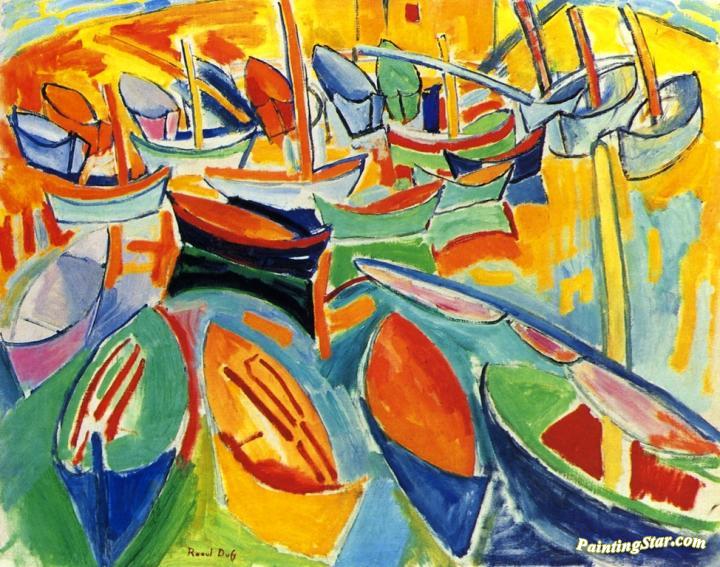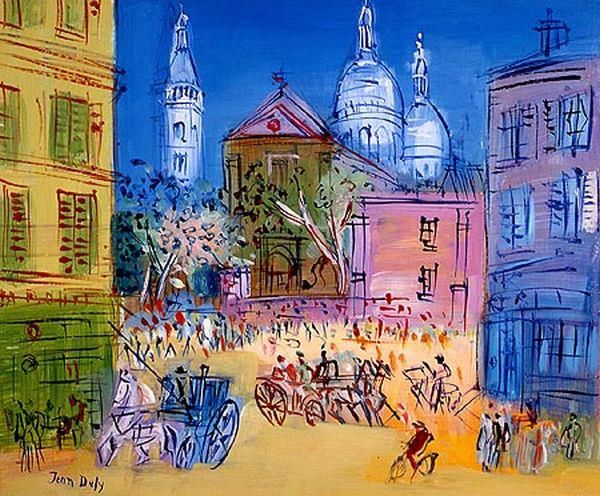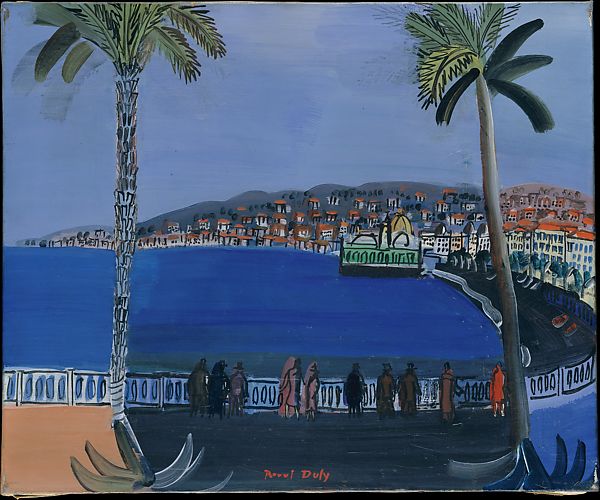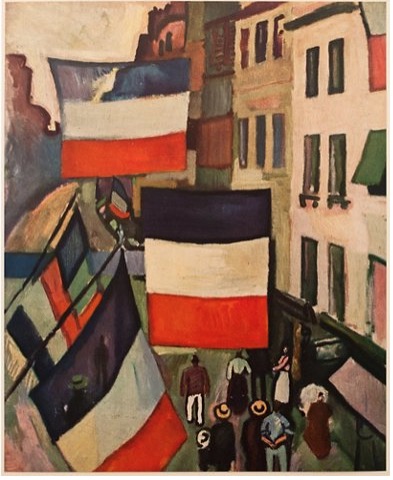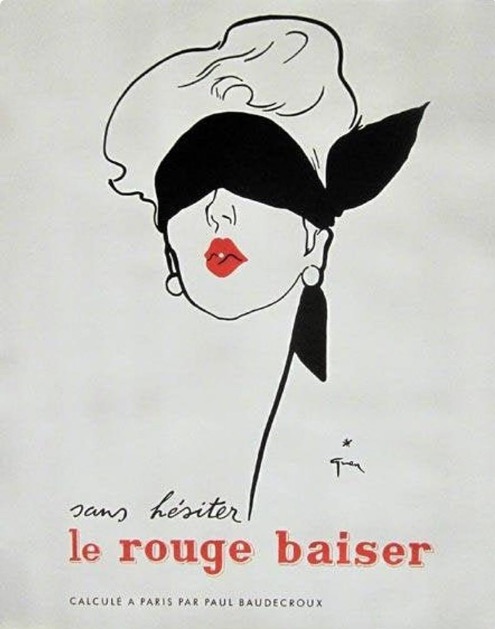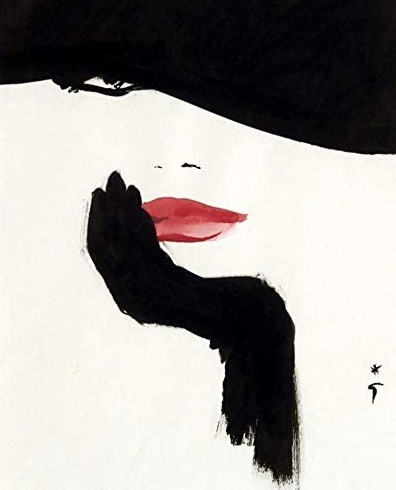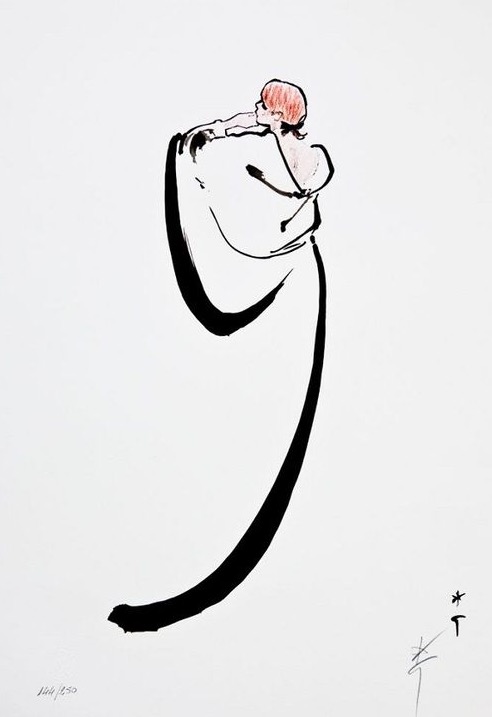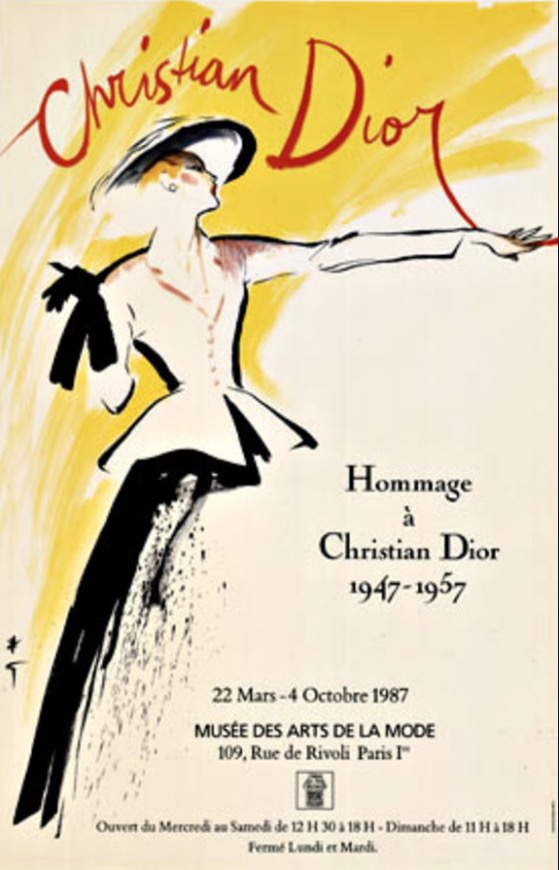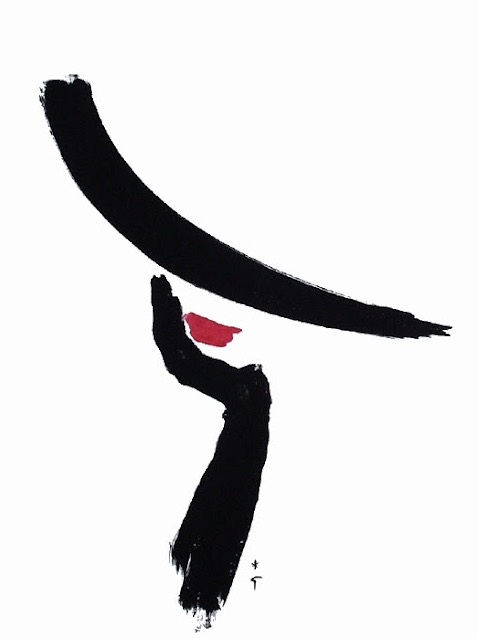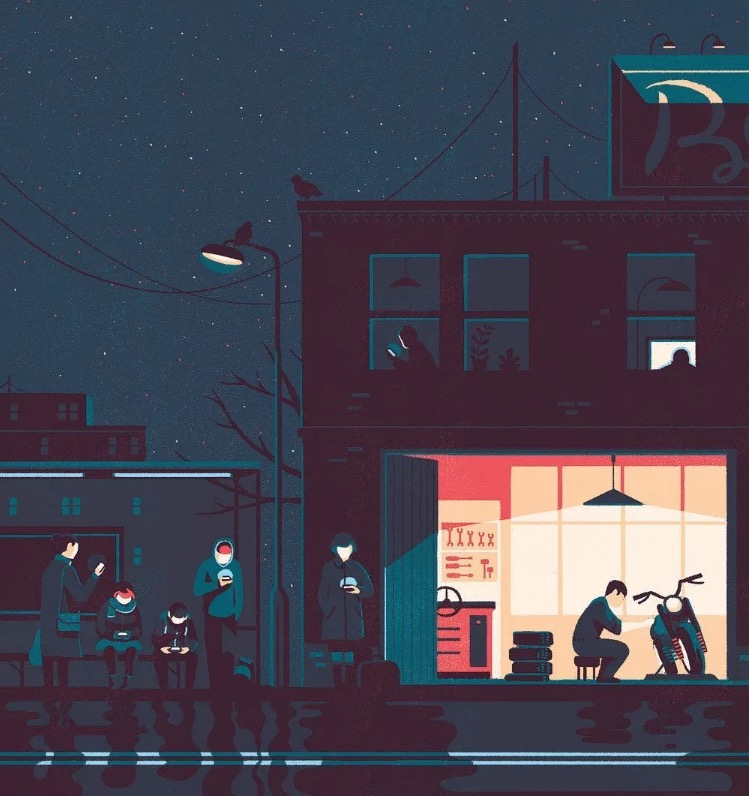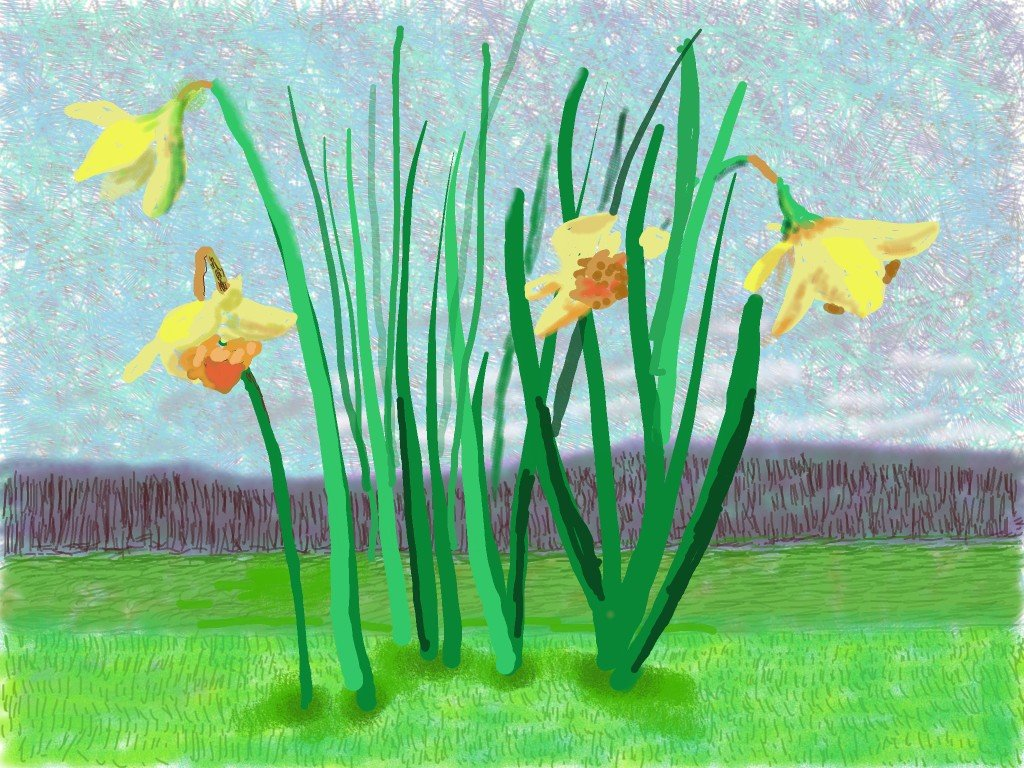Art Deco illustrator.
For an index of articles on art illustrators, click here.
George Barbier (1882-1932) died young, just as the Great Depression started to roar. That’s somewhat appropriate as his delicate Art Deco illustrations are frequently about flappers and society people of the 1920s, the newly rich who saw no end to stock market gains. They had disappeared by the time of his death.
“Stock prices have reached what looks like a permanently high plateau,” quoth the famous economist Irving Fisher in early October, 1929. Proving that you should never take investing advice from an economist. Black Thursday, October 24, saw the market drop by 11 percent, followed four days later by Black Monday, when it fell another 13 percent; and the next day, Black Tuesday, when it lost 12 percent more. Good market timing, Irving.
Sounds just like today when stocks are overvalued by 50% as the market continues in denial about 40 million unemployed – and largely unemployable – American workers. Today we are waiting for the pandemic to ‘magically disappear’ courtesy of the moron in the Oval Office. Nothing changes.
Here are some favorite Barbier images from the Roaring Twenties, ones no photographer could ever equal:
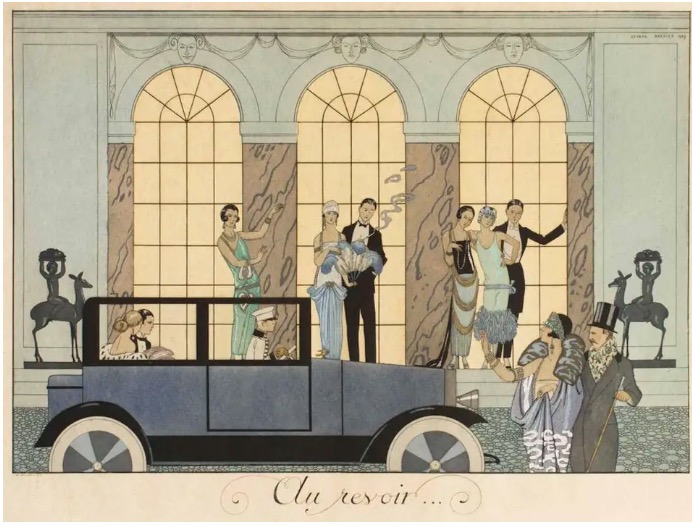
The Roaring Twenties and its denizens.
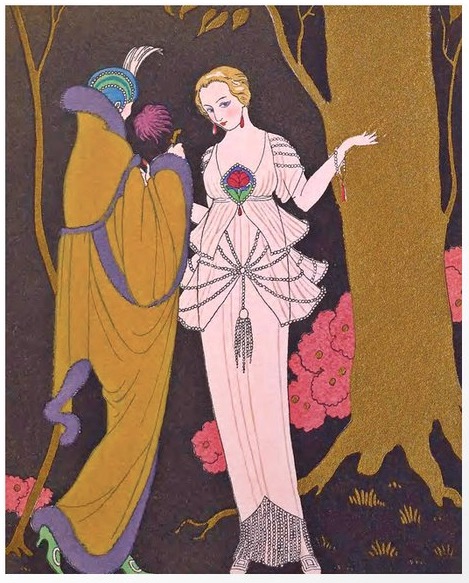
Exquisite use of line.
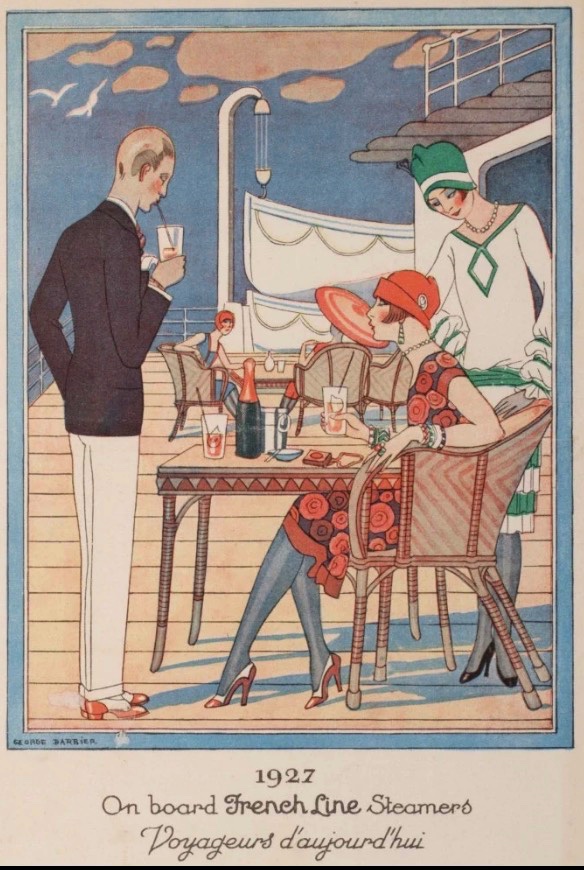
Before the days of sardine cans masquerading as transportation.
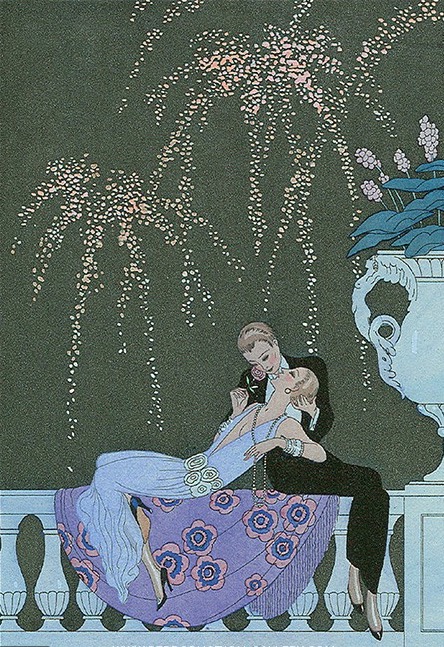
Simple charm and great sophistication. Hitchcock
appropriated the firework background in ‘To Catch a Thief‘.
Like Dufy and Gruau after him (see the previous two posts here) Barbier’s work was always in demand.
If you are interested in learning more about the gorgeous bias cut dresses frequently draped so elegantly on Barbier’s women, check out Madeleine Vionnet.
